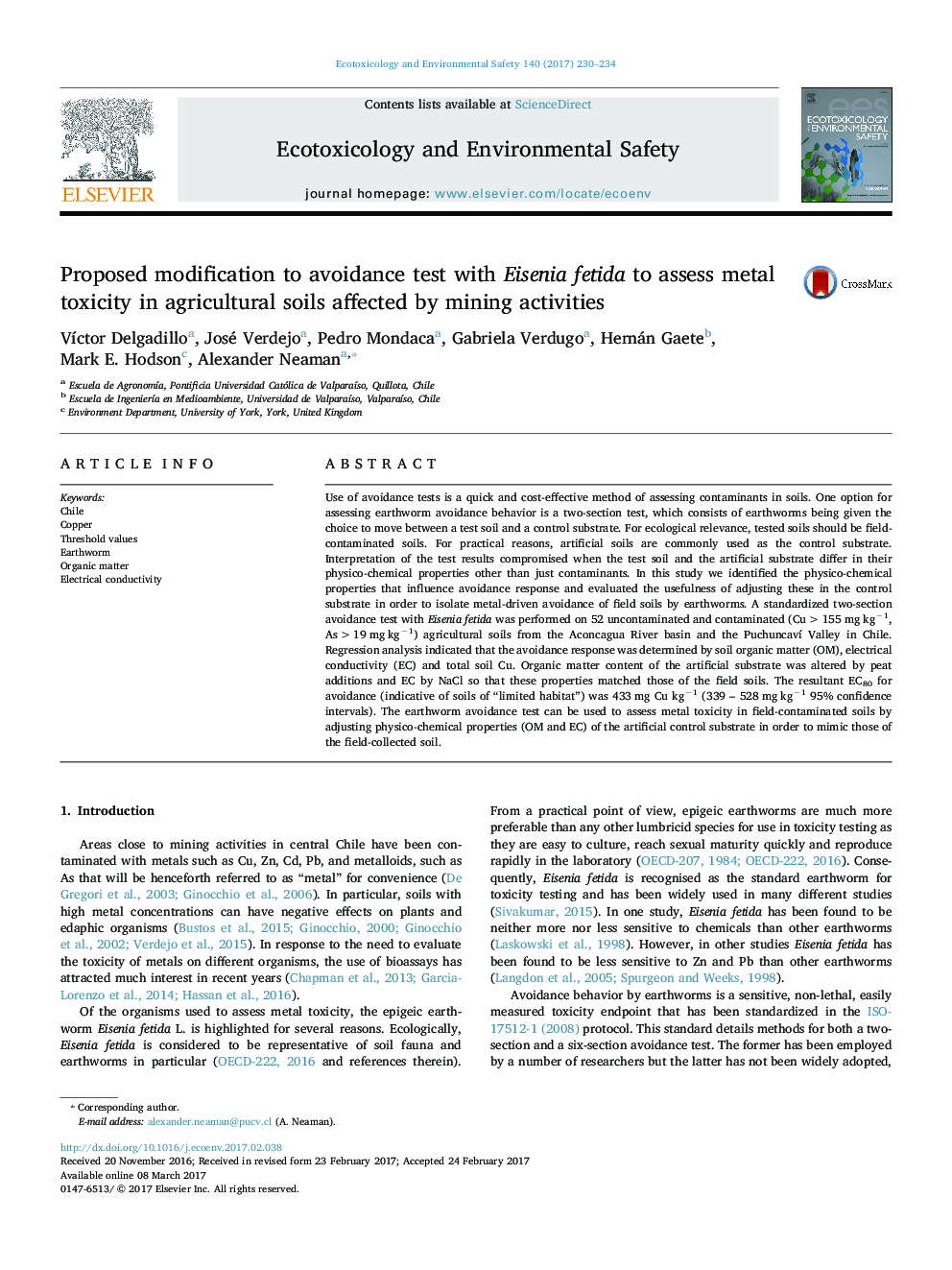| کد مقاله | کد نشریه | سال انتشار | مقاله انگلیسی | نسخه تمام متن |
|---|---|---|---|---|
| 5747682 | 1618924 | 2017 | 5 صفحه PDF | دانلود رایگان |

- Avoidance was affected by organic matter (OM) and electrical conductivity (EC).
- Adjusting OM and EC suppresses the effect of these factors on avoidance response.
- The improved method allows determining toxicity thresholds of total Cu in the soil.
Use of avoidance tests is a quick and cost-effective method of assessing contaminants in soils. One option for assessing earthworm avoidance behavior is a two-section test, which consists of earthworms being given the choice to move between a test soil and a control substrate. For ecological relevance, tested soils should be field-contaminated soils. For practical reasons, artificial soils are commonly used as the control substrate. Interpretation of the test results compromised when the test soil and the artificial substrate differ in their physico-chemical properties other than just contaminants. In this study we identified the physico-chemical properties that influence avoidance response and evaluated the usefulness of adjusting these in the control substrate in order to isolate metal-driven avoidance of field soils by earthworms. A standardized two-section avoidance test with Eisenia fetida was performed on 52 uncontaminated and contaminated (Cu >155 mg kgâ1, As >19 mg kgâ1) agricultural soils from the Aconcagua River basin and the Puchuncavà Valley in Chile. Regression analysis indicated that the avoidance response was determined by soil organic matter (OM), electrical conductivity (EC) and total soil Cu. Organic matter content of the artificial substrate was altered by peat additions and EC by NaCl so that these properties matched those of the field soils. The resultant EC80 for avoidance (indicative of soils of “limited habitat”) was 433 mg Cu kgâ1 (339 - 528 mg kgâ1 95% confidence intervals). The earthworm avoidance test can be used to assess metal toxicity in field-contaminated soils by adjusting physico-chemical properties (OM and EC) of the artificial control substrate in order to mimic those of the field-collected soil.
Journal: Ecotoxicology and Environmental Safety - Volume 140, June 2017, Pages 230-234